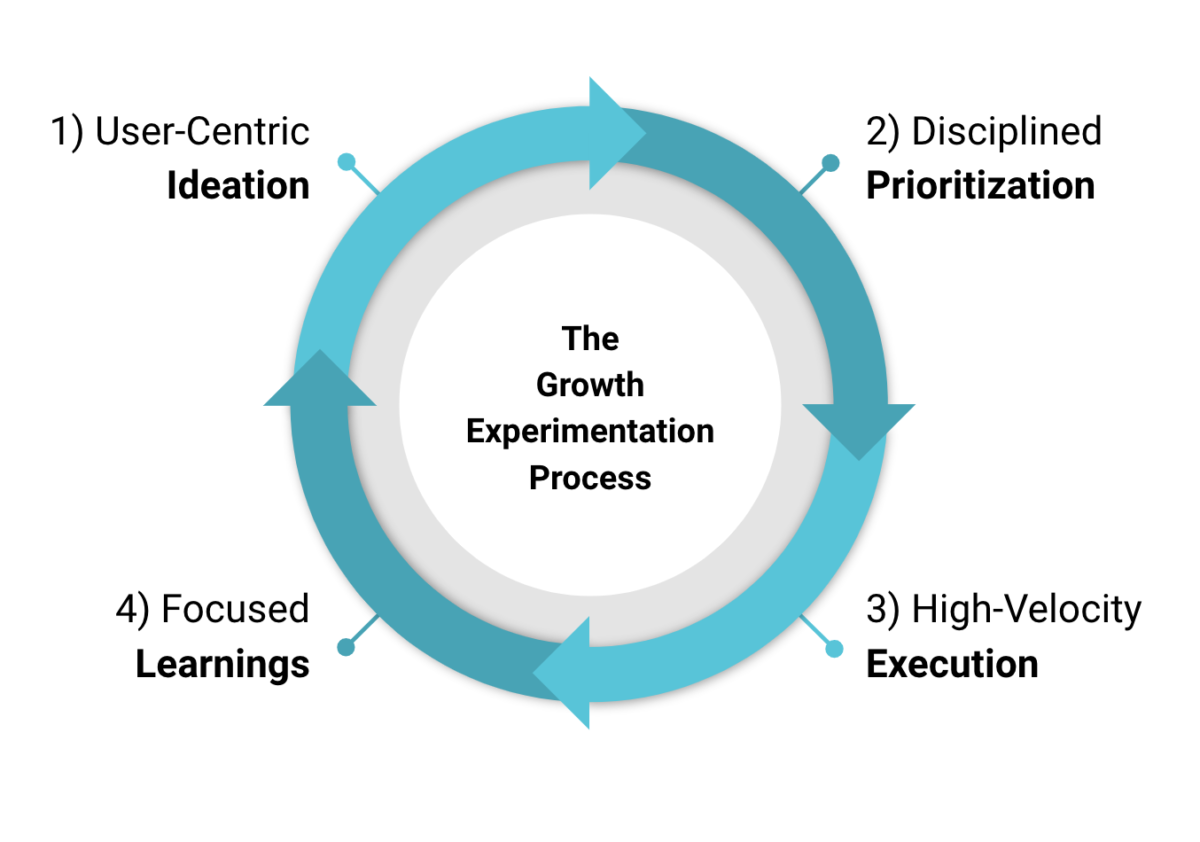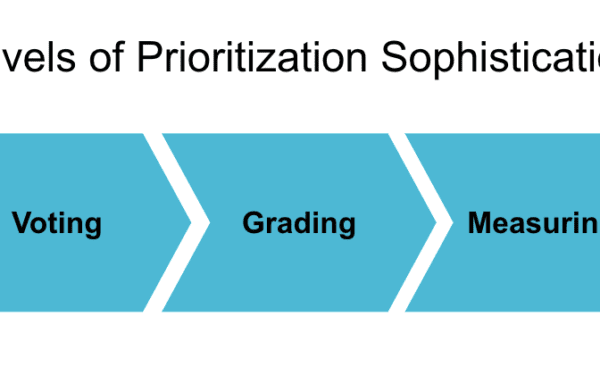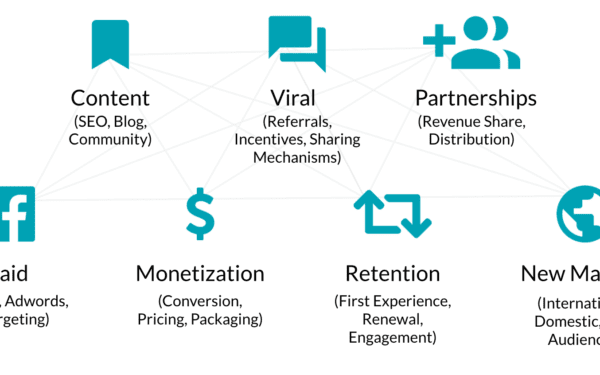When I evaluate growth candidates for hire, I test specifically on these 4 areas of a growth process.
Why?
“Growth” is a process. The best growth leaders I know are successful because they run a diligent and repeatable process which drives business learnings and ultimately revenue growth metrics.
There are no “silver-bullet” ideas in a good growth program, there is only user-centric ideation, disciplined prioritization, high-velocity execution, and focused learnings. From startups all the way up to establish companies, understanding these concepts is what separates winners from losers. It’s what enables consistent outperformance in a market.
The 4 stages of a growth process

I’ll go into each of these stages in more detail including target outcomes, common failure points, and a self assessment checklist. But first, some definitions –
User-Centric Ideation: This is the process for coming up with hypotheses in a user-centric way. Meaning that you root your hypotheses in foundational user understanding and research rather than personal or company-held opinions/perspectives.
Disciplined Prioritization: A framework for capturing and evaluating the ROI of hypotheses in an unbiased way. And a backlog that is resistant to turbulence and new ideas/requests which are low-ROI.
High-Velocity Execution: This is referencing your experiment velocity which is the top-of-funnel for a good experimentation program. How many experiments do you launch per week, per person on your team?
Focused Learnings: How to get the most learnings benefit from positive and negative results, sharing learnings amongst your team and broader org to amplify collective intelligence, and grouping learning goals into “themes”. This helps guide you towards a comprehensive understanding of users.
User-centric ideation

Target outcome:
- A large backlog that is high-confidence and derived from multiple idea source types.
Most common failure point:
- Using a single, low-confidence idea source type (like individual or group brainstorming).
Self-assessment checklist: Have you…
- Drawn from multiple idea sources? I.e. Comparables, user research, data analysis, group brainstorming, subject matter experts etc.
- Generated at least 10 ideas?
- Structured the ideas around a common user theme/question or metric you are trying to solve for?
Disciplined prioritization

Target outcome:
- A sort-ranking of your ideas which optimizes for return-on-investment and the lowest risk.
Most common failure point:
- Not taking into account or not accurately evaluating the effort and confidence of ideas.
Self-assessment checklist: Have you…
- Used a quantifiable framework to estimate the ROI ideas such as I.C.E. Scoring?
- Evaluated the confidence of an idea accurately by taking into account the idea source type?
- Proactively communicated your prioritization method to stakeholders and ran new ideas or requests through the same process as they come up?
- Gotten at least one other source of scoring input to mitigate your personal bias and strengthen scoring confidence?
- Applied the framework on multiple levels to maximize your team’s effectiveness? I.e. Initiative/user-theme level, and individual hypothesis level.
High-velocity execution

Target outcome:
- A high experimentation velocity (rate of experiments / week / team size)
Most common failure points:
- Just straight up not having and not executing on a thought-through process.
Self-assessment checklist: Have you…
- Created a streamlined process which is straightforward, reduces back-and-forth + idle time, leverages the strengths of different functions on your team, and empowers individuals with ownership?
- Set up, automated, and consolidated the tools you use for execution? Adequately trained your team on how to use them and set reasonable expectations?
- Documented and gotten feedback on your processes?
- Designed experiments which are inherently fast because they are focused on testing the core underlying hypothesis and have de-scoped features which are not crucial to that goal?
- Developed a growth-mindset and culture on the team which prioritizes experiment execution speed over comprehensiveness?
Focused learnings

Target outcome:
- A better understanding of your users to help improve strategic direction and generate higher quality hypotheses across your team and the broader org.
Most common failure point:
- Not taking the time to share learnings or not creating an effective medium for sharing.
Self-assessment checklist: Have you…
- Created a standardized results analysis report dashboard with multiple segmentation views which allows you to understand the drivers of positive and negative results in an experiment?
- Ensured that you are executing statistical best practices such a minimum runtime duration and minimum statistical significance?
- Developed a way to document experiment results that is easy to understand and digest for others?
- Created effective sharing mediums for your team and broader org?
- Proactively shared both positive and negative results?
- Tied results back to an overarching user question that you are trying to figure out?
In my next post I’ll dive into how you can maximize your team efficiency around these 4 stages. I’ll share tactics on how to improve experimentation velocity, win-rate, and average KPI lift/win!



